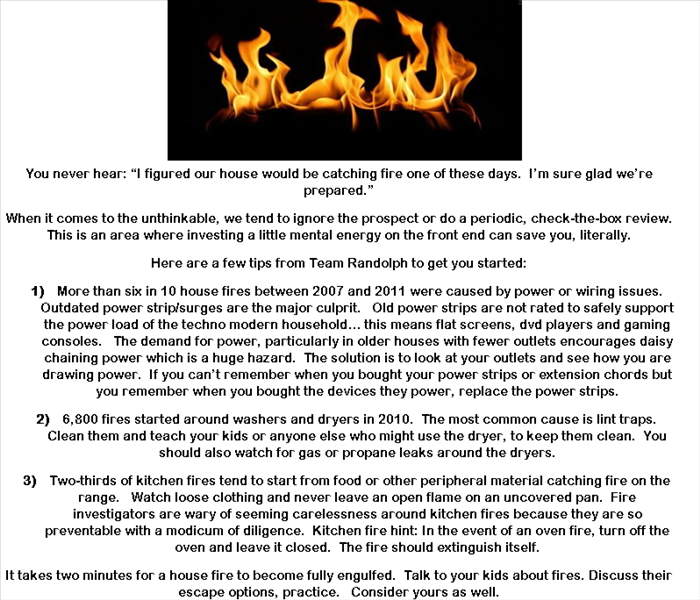Fire Prevention '16
10/27/2016 (Permalink)
You never hear: “I figured our house would be catching fire one of these days. I’m sure glad we’re prepared.”
When it comes to the unthinkable, we tend to ignore the prospect or do a periodic, check-the-box review. This is an area where investing a little mental energy on the front end can save you, literally.
Here are a few tips from our team to get you started:
- More than six in 10 house fires between 2007 and 2011 were caused by power or wiring issues. Outdated power strip/surges are the major culprit. Old power strips are not rated to safely support the power load of the techno modern household… this means flat screens, dvd players and gaming consoles. The demand for power, particularly in older houses with fewer outlets encourages daisy chaining power which is a huge hazard. The solution is to look at your outlets and see how you are drawing power. If you can’t remember when you bought your power strips or extension chords but you remember when you bought the devices they power, replace the power strips.
- 6,800 fires started around washers and dryers in 2010. The most common cause is lint traps. Clean them and teach your kids or anyone else who might use the dryer, to keep them clean. You should also watch for gas or propane leaks around the dryers.
- Two-thirds of kitchen fires tend to start from food or other peripheral material catching fire on the range. Watch loose clothing and never leave an open flame on an uncovered pan. Fire investigators are wary of seeming carelessness around kitchen fires because they are so preventable with a modicum of diligence. Kitchen fire hint: In the event of an oven fire, turn off the oven and leave it closed. The fire should extinguish itself.
It takes two minutes for a house fire to become fully engulfed. Talk to your kids about fires. Discuss their escape options, practice. Consider yours as well.





 24/7 Emergency Service
24/7 Emergency Service